News
Is the BioMech putting sensor/app an essential for improvement? Here’s a deep dive interview
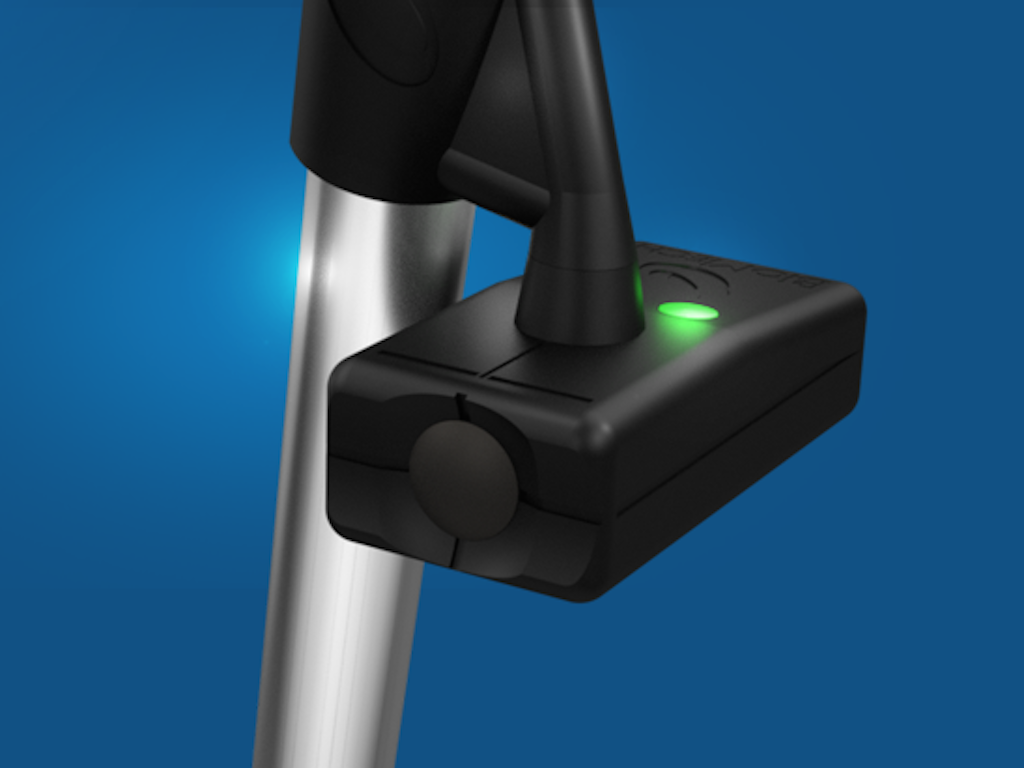
A couple of years ago, Dr. Frank Fornari and BioMech created a stir with the BioMech Acculock ACE putter, a radical new putter design that integrated the principles of biometrics, the science of motion. The putter was designed to be used with a specific type of putting stroke that would be proven by the BioMech team to be the ideal method for putting. The putter developed a cult following, but the BioMech team is back with a tool that just might break into the mainstream.
Fornari’s team has developed the BioMech putting sensor and app. The sensor attaches to any putter and transmits data about each putt to an app that can run on any iPhone or iPad. It provides key data on what the player is doing, when they are doing it and why they are doing it, making the BioMech sensor effective whether you are a player, an instructor or even a manufacturer. With the golf industry driven more than ever by technology, the BioMech sensor could become as essential to putting and the short game as Trackman is to the full swing. I had a chance to sit down with some of the key personnel at BioMech to talk about the sensor and app, and why they are confident that they have the product that will change the way people learn, teach, practice and play.
Joining the conversation were BioMech CEO John Douglas, Dave Edel of Edel Golf, Director of the Pebble Beach Golf Academy Laird Small, and PGA Tour Professional Heath Slocum.

GolfWRX: So, let’s talk a little bit about the beginning of BioMech because I know John that you have a serious and complex background when it comes to science and learning technology and that sort of thing. How did you connect with BioMech and how did BioMech actually get connected to the game of golf?
John Douglas: Well Dr. Frank Fornari, who’s our chairman and founder, started BioMech. We met each other through some private equity and healthcare investment opportunities and started working together on a variety of notions and ideas we thought that we could bring to market to help improve quality of life. BioMech is a motion science company. We are scientists, engineers, clinicians, doctors and we’re focused on improving quality of life through improving quality of motion whether that activity is rehabilitative or whether you’re recovering from surgery or whether that’s actually putting a golf ball, and so it’s part in parcel to what we do. Now, what we do that we believe is unique in terms of technology is we try and take the highest technology that we can put into a format that people will use and deliver the most scientifically accurate and quantitative results in a format that people can easily understand.
GolfWRX: Right.
John Douglas: I started my career early on at Apple and candidly the take away from that for me was that the best technology is the technology that evaporates. It disappears, okay? It’s transparent because people don’t actually care about technology, what they care about is that they want to phone their mom or they want to get in touch with somebody or they want to send a message to somebody.
GolfWRX: Totally agree, I always say nobody knows how a refrigerator works but…
John Douglas: We all rely on it, right?
GolfWRX: Yes.
John Douglas: So, long story short, the intention is to take the highest resolution, most valid information and deliver it in the easiest to understand form to help people understand whatever it is they need to do to make them better.
GolfWRX: Outstanding. So, from concept to product, how many integrations did you go through and what the ups and downs of getting that done? Do we have enough time?
John Douglas: No, we can talk briefly about this but there are literally thousands, if not tens or even hundreds of thousands of cases of iterations to get everything just right and it’s about a five-year arc for the tech platform that we’re talking about. We’ve got real time sensors that operate over Bluetooth and optionally over Wi-Fi for stadium applications or sports applications, but they deliver the information in real time and by that we mean is 120 milliseconds for immediate delivery, immediate feedback.
GolfWRX: Imperceptible, really.
John Douglas: That’s exactly right and we’re able to do that from multiple points and because of that and because of the real-time nature we’re able to provide a Pavlovian experience where we’re reinforcing good behavior and moving people away from bad behavior.
GolfWRX: I’m imaging all the readers Googling “Pavlovian.” Laird Small, you are a Hall of Fame instructor. When you look at technology like this, because you’ve used thousands of things, to teach golf. You’ve used a stick in the ground, you’ve used a safety pin, you don’t need a lot. So, when you look at this technology, what convinced you that this is essential to the learning experience.
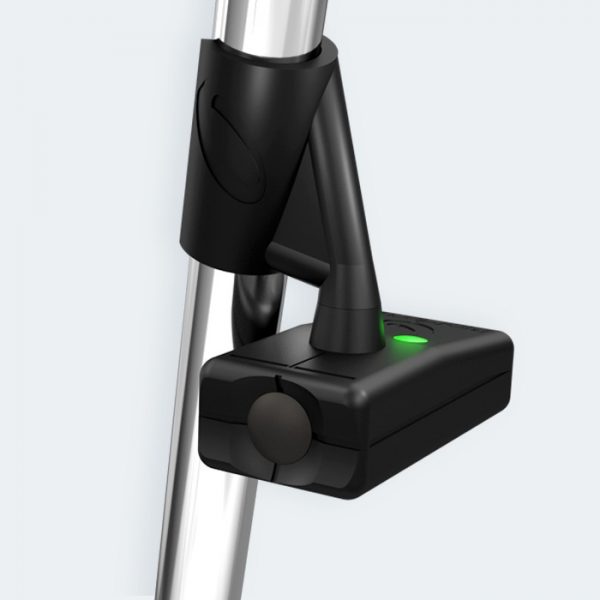
Laird Small: I think the first thing is ease of use and it’s extremely easy for the golf professional to use or even for the player to use. Also, how dependable is it and how accurate is it from a feedback and information standpoint and the fact that the information that this gives is spot on and it allows the player and the coach to be able to dial in exactly what it is that they want to work on in their putting stroke. It gives that information instantaneously, and what we find is that in this platform that we use, the golfer is truly so engaged in using it that it’s almost addictive. They can see their numbers change over time and they can see it change immediately, so by doing that, they want to continue to work on it because they’re seeing real time progress. So, it makes practice fun and usually practice and putting is very boring.
GolfWRX: If there’s anything that can make the putting practice experience more fun, then you’ve achieved something.
Laird Small: Right and the sensor is so small, it weighs about three quarters of an ounce and you put it right on the putter itself.
GolfWRX: I know there is a particular BioMech putter that advocates a style of putting but the sensor can be used on any putter?
Laird Small: Yes, any putter. Any putter, any stroke, any grip that you chose to have on the putter or grip type, it goes right on the instrument, and it only weighs three quarters of an ounce, so you can’t feel it on the club itself. Now, what’s so cool about it is that you can travel with it all over the place because most putting teaching is done indoors on large machines or it’s cumbersome and there’s stuff on the putter that actually disrupts the weight of putter. With the BioMech sensor, you go out on the putting green or what’s really cool, is you can go out on the golf course. See, what people are really interesting in is transferring the skill. They’re interested in transferring the skill from the practice facility to the golf course, and the question they always have is, “How come I can do it on the practice facility but I can’t do it on the golf course?” So, what you’re able to do with BioMech is to test what you do on practice facility and now go over to the golf course and actually see what happens and compare the data to see how your habits are either the same or how they have changed which gives great insights to the learning process and what each individual does.
GolfWRX: And it’s saving data that you can retrieve as an instructor later and it can also be sent real time to an instructor, correct?
Laird Small: Correct, we are able to see that right away.
GolfWRX: That’s fantastic, especially with a person like you who’s working with students literally all over the country, if not all over the world.
Laird Small: Correct. That’s exactly right, because usually a player calls in, “I’m struggling with my putting.” And okay, the questions have to be; What are you doing? What’s the ball doing? Is it going left, is it going right? As a remote instructor, you don’t know what’s actually happening, but these metrics are accurate so you’re able to see it and say “Okay, do this”. So, the conversations are easy and what it also does is help the player to trust their technique and that’s what’s so important. Once you can trust your technique and you can let go of it, you can actually just focus on the target and execute, and that’s what’s so spectacular about it. Most players, as you know Michael, have a dozen putters in their closet.
GolfWRX: At least.
Laird Small: And so then how do you know which one works for you correctly? “Well, I’ll try this one or I’ll try this one and now the magic’s gone away from this one.” So, what this sensor allows us to do is confirm that each putter has different properties to it, different weights, design, different concepts. It allows us to tell exactly which putter preforms better for you, and then you can stay with that putter and work towards perfecting the motion with that putter. That’s why I was so excited to introduce Dave Edel to this product because it really helps the putter fitter and it helps the manufacturer as well.
GolfWRX: Very interesting stuff. Dave, let’s go to you. You’ve seen technology like this come and go, so the idea of having a putting analysis system that isn’t exactly ground breaking here. There are a number of data out there so, from your perspective, as a top level manufacturer, what makes this exceptional as a tool?
Dave Edel: Well, I think it comes down to the fact that, as a putter maker, to me it’s not about me making putters to sell a widget, for me it’s about a conceptual understanding of how people can get better and the tools needed to do that and for years, putting diagnostic applications in been in the industry and they’ve evolved but they’re still, like I said, very cumbersome, they’re-
GolfWRX: Expensive?
Dave Edel: Yes. And they’re basically, they’re there to show the flaws in what someone’s doing but what I look at from a manufacturing standpoint and not from a manufacturing standpoint but more from a conceptual standpoint is to build my company around the core fundamentals of how people get better. So I build the putting fitting that has 25 million variations in it. What does that mean? It means it gives me the tools to give to Lawrence and every other fitter and teacher out there the ability to quantify why that variable is better. Now, let’s say I change aim from someone who aims a foot left, right? Now they’re been married to their motion for five years or their whole life that was an inside out blocking motion to offset the left aim, they get my putter that aims better and now they miss right instead of maybe making the put and what it allows me and the people involved in Edel is the ability to take a diagnostic like this which is portable, which is taken all the best analytics in the industry can offer and they go on steroids and they take care of everything I need to have happen and how does it report, what can I study, what can I give to the person so they can take that putter and now work on their stroke in a way that is beneficial and my putter never gets thrown under the bus, right? For, “Wow, I’ve got this expensive putter and went through the fitting process, totally believe in it, can roll the speed, but I miss it right every time.” Well that’s because your stroke, you don’t understand your stroke pattern. You understood it for the other putter but you don’t-
GolfWRX: And like you say, when you have a system that gives you, what? 25 million variations, you said?
Dave Edel: Yeah.
GolfWRX: Right so now you are mechanically able to respond to the data of what looks good and what works well. You can respond to that. So, that’s what I like. The idea that you can respond technically to what you get statistically.
Dave Edel: Exactly. Right. I mean, people need ways to quantify it and if you go on the putting green, why if in the past you’d get a sensor that would say, “Oh, I missed the put two degrees open.” Yet the ball went left.
GolfWRX: Right.
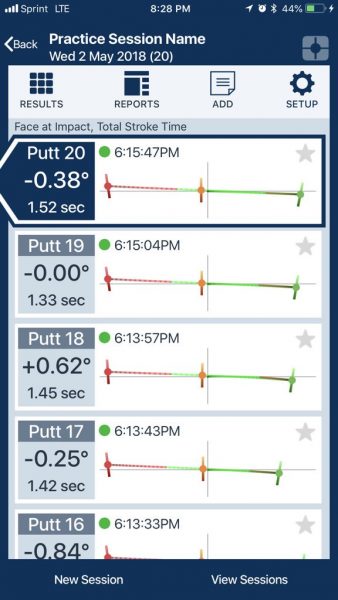
Dave Edel: The person’s saying, “How do I understand that?” Well, it’s the three axes of how that putter works in space, time, and motion and any one thing could be sending the ball in a different direction than maybe another sensor would say. This BioMech sensor is so sensitive and the application is so fantastic that it’s actually tracking in space, time, and motion in the stroke, where that putter faces and what velocity that head is moving and capturing the face rotation rate that makes that ball move so I can make a great putter. And then I can have that person go away and get the BioMech sensor and go get even better.
GolfWRX: Actually, what it all comes down to.
Dave Edel: I’m a performance-based company. That’s all I care about. I don’t care about selling people putters, I care about them getting better. I should be able to sell a putter if I do that and if I have that consciousness.
GolfWRX: Sadly, you are not in the majority in that.
Dave Edel: And, by the way, I should say we have had the great benefit of working with these wonderful gentleman in the development of this product and part of the way we look at the world in terms of building products, is that this is always an interactive experience, that no product is ever done and the best ideas for how we can improve communication and deliver this kind of information always come from our clients and from our partners and these folks are great at that.
GolfWRX: Beautiful. So, we’ve talked to the butcher, the baker, and the candlestick maker; let’s talk to the guy who has to actually go use this and make a living on it. So, Heath Slocum, as a player, it is literally all about performance for you. All you care about is does this thing make the ball go in the hole and you being the engine that drives that. From a player’s prospective, you’re a talented person, obviously, and you know how to make adjustments much more than anybody, how did you come to find that this is an effective tool for you that doesn’t hinder your natural ability, rather it helps you and augments your natural ability.
Heath Slocum: Well, like you said, it’s all about performance when you’re playing on the PGA tour and you’re trying to make a living with anything, with your equipment.
GolfWRX: Even if it’s a stick in a coke can.
Heath Slocum: Absolutely. So, I’m looking for the best equipment and the best technology out there that helps me find a quarter of a shot a day. I mean, we’re talking nothing. A shot a tournament just completely adds up at the end of the year. I was fortunate enough to become a partner with BioMech and to see where this was going and to see how this could actually help my own golf game, right? So, I’m always looking. Fortunate enough for me, Dave Edel not too long ago, and he fits me in a putter that he tells me is good for me, compare it to what I putted with for 15 years and to get better results. I’m able to take what he’s doing and to marry that with a sensor and to actually be able to see it, use it, quantify it, and then actually put some of this data together to make not only my sessions better but to walk myself in right before I go out and play.
GolfWRX: Right.
Heath Slocum: It’s such an easy tool to use. I get some of my best strokes when I’m playing my best; now I’ve got them locked in and I know what I’m doing and so if I struggle I can always go back and look and find the stuff and I don’t have to keep searching. I have it there, it’s easy to use and I can use it every single day.
GolfWRX: You know, it’s very interesting what you just said because of the whole saying that goes, “Same blank, different day.” But it’s really “different stuff, different day.”
Heath Slocum: Absolutely.
GolfWRX: You go out there and think you’re doing the exact same thing but you’re not so this is a way to say, “Why am I missing this to the right?”
Heath Slocum: Well, right because our own field gets in our way a lot of the times. Our perception is not always completely accurate-
GolfWRX: For me, it’s completely inaccurate.
Heath Slocum: Correct, so that’s the thing. Now I have a tool that I can go out, every single day, whether I’m just practicing, actually doing some drills or whatever I’m doing trying to prepare for a tournament, and it’s right there with me all the time. I can always go back, and all the analytics and my best putting sessions are there; I call them my “fuel”. I can actually go back and look at these numbers and this will tell me right away, instantaneous, whether I am actually doing what I feel and if not, why and how I can actually get those parameters back to where they should be, back to where I actually putt my best.

Laird Small: What’s so cool about this is that what players do when they struggle, they tend to go away from their thought process and the methodology so then they go to something else. They’re searching and what happens is it becomes it becomes they’re going down these box canyons that they’re never going to get anywhere with and what the best players do is they stay on track and on task with what their goals are and with what their concepts and philosophies are about putting or swinging the club or whatever it is, and they repeat that. What the technology helps you to do is say you’re still doing the stroke right, you’re actually really good, but perhaps your mindset changed that day. So, you can actually really go back and say, “Hey, my physicality of the stroke is okay, but my mindset was off.” So, you can really go do the proper work. It’s so important for people getting better because what happens is as soon as something goes wrong, they’re off doing something different; they change a putter, they change a concept, the change their grip. Whatever, that’s really frustrating for the player and for the coach.
Laird Small: And what’s so important is, putting is the most precise part of the game.
Dave Edel: As a manufacturer and putter fitter, people come to me and whether it’s a tour player or it’s a good amateur, or just a non-proficient player, they come in and say, “Boy, when I putted my best…” They’re always telling me about what they used when they putted their best and tour players are notorious for coming back and going, “I won the tournament doing this.” And I’m like, “Yeah, I know.” But they’re looking for that guy again or that gal…they’re looking for who they were, what happened in that two-year stretch where “I was unbeatable, I played the best I ever played.”
GolfWRX: There you go.
Dave Edel: It’s not that it was perfect, it’s just what they did and for some reason it matched. They’ll be able to do this now if they have a BioMech because now they can archive what they’ve done or the sessions that worked the best and they can keep going back on a daily basis and find their Scooby snacks.
GolfWRX: Let’s talk about some of the practicalities of how to get one into players hand. The product is in fact available right now, John, yes?
John Douglas: It is indeed.
GolfWRX: Talk about what are we using? When you get the product, what comes in the box?
John Douglas: The app is a subscription-based app, it’s available on the Apple App Store and it’s currently available in the United States and right after the PGA show, it’ll be available in most of the rest of the world. What comes in the box is a sensor and an international charging cable and adapter that can be used anywhere in the world. It also comes with shaft clips that are designed to be married with different kinds of putters in terms of the width of the shaft. One of the reasons we took that approach it makes it very, very easy to roll the sensor off of one putter and try it on another putter, and it makes it very easy to compare on a given day with different putters and make dynamic decisions.
GolfWRX: How big is the sensor? What are we talking about attaching to the club?
John Douglas: The sensor itself is about say two inches by an inch.
GolfWRX: So unobtrusive; you won’t feel it.
John Douglas: Three quarters of an ounce, 21 grams and no, you should not feel it at all. The sensor itself is available on our website or if you purchase the subscription to the app through the app store, it’ll walk you through the process of getting a sensor at the end of getting your subscription automatically.
GolfWRX: Right, and it’s the sensor and app that work together. Buy the sensor, get the app and then subscribe.
John Douglas: Yes. What the subscription gets you in addition to being able to use the app in general, is you get to multiple devices. So, for instance, if I’m using my iPhone and I’m out there practicing and I’m having the app talk to me as I’m putting out on the green but I’m not interacting with the technology at all, I’m just putting and I can hear my face statistics, I can then go back to the club house afterwards and I can pull up my iPad and I can review things in greater detail; I can share reports, I can compare what I just did to what I did a year ago at the same time. The idea is to allow that information to be shared thoroughly. And if I’m working with an instructor, the instructor subscription provides additional reporting, additional metrics and the ability to link to any number of students so that as an instructor I can actually go in and look in real time at the putting session and the putting activity of any of the people I’m partnered with. So, instructors can link to other instructors or other professionals who might benefit from the data that’s being generated.
GolfWRX: So, you have sort of a crowd sharing situation, where this information is available and can benefit a multitude of people, however many you to choose to include.
John Douglas: That’s right, and to be very clear, only to those people that you choose… The other thing I wanted to mention is that there’s video that’s available with this also, so you’re syncing the video of the putts and you see an animation of how the putter head is moving in space alongside video of the putt and I think that’s interesting because earlier putting analysis systems where camera based. It was all about measuring off of these pictures and a lot of it, I found, was kind of nonsense. You had to be in a particular place and it cost $500 dollars an hour to use and that sort of thing. But now, we have this accurate science available in terms of measuring movement of the putter head and you’re marrying it to the visual of your actual stroke. A very useful feature.
Laird Small: And so many people learn visually. That’s one of the main modalities, so they can see the technology and then they watch their stroke and the metrics change, all of a sudden it creates this wonderful picture that says, “Aha! I see it now and I see exactly where I do it.”
GolfWRX: I mean, how many people swing into a mirror? It’s kind of that same concept.
Laird Small: But it creates that awareness in real time so what you want to do is catch people in the act, so they need to catch themselves in the act in the act of what they’re doing.
GolfWRX: You wanted to jump in, Dave?
Dave Edel: We don’t require in any way, shape or form that you aim the camera at the putter. So, for instance, for people who are suffering from some type of dyskinesia or the “yips” or what have you, you may want to monitor what your head is doing during the putt and be able to synchronize that and watch that with what the putter face is doing. You can watch different dimensions.
GolfWRX: Great point, really good point. So, how much does it cost to get this into our toolkit?
John Douglas: The sensor itself is $299. The app subscription is $20 a month/$200 a year for players, and the instructors subscription is $50 a month/$500 a year.
GolfWRX: Are they in the field right now? Are we seeing anyone using it on tour? Have you seen any other tour players who’ve had some response to this, without naming any names?
Heath Slocum: There have been numerous tour players that I’ve had on the sensor and the feedback is been nothing but positive. The funny thing is that I’ve been using it for so long from the very beginning that I’ve had a lot of time to analyze in my own putting, what I’ve learned is that with some of the guys put on this thing, I can actually help a little bit, just to say, “Look, everything’s with your stroke is absolutely amazing so let’s look at your alignment, let’s look at your read but your stroke is great.” Or I can tell that you’re not closing the face enough, and Dave Edel can tell you a lot about this, but maybe just try a putter that swings a little more. And you actually see the results right in front of them and you show them and they’re like, “Wow!” It’s that easy sometime and again, I think more and more guys, now that is it available, are going to start using it.
GolfWRX: Success breeds desire.
Heath Slocum: Absolutely.
Laird Small: And to his point, players can’t get better if they’re focusing on the technique. So, if they can let go of their technique and the technology helps to confirm that, and Dave Edel’s equipment helps to confirm that as well, they just have to focus on the target. When they focus on the target and they let go of that stuff, now they think about reading the green, the right speed. All of a sudden golf becomes what it should be, a game.
GolfWRX: They stop playing swing and start playing golf.
Laird Small: Right, people don’t know how to get to that point.
GolfWRX: There you go, that’s the lead. Dave, from that manufacturer standpoint, you’ve made some of the most desired putters out there right now. Have you designed anything that’s working backwards from your experiences now with BioMech? Have you taken this and incorporated this system and its ability to create and track data and store data into your design?
Dave Edel: I think that, first of all, I’m a PGA professional that built a golf company with intent to make people better at golf. So, what BioMech will help me to do, the more I use it, since it’s a cloud-based scenario, is take all that data from people that are involved in our network and that information can come back to us and say what’s actually happening, what’s actually providing measurable results and improvements in people. That’s phenomenal.
I see BioMech as the last spoke that we needed to integrate a process, a concept. That’s the way I’ve looked at this since day one. I looked at an information platform that allows people to enter and get what they want out of it in terms of what their stroke needs to do, what their putter needs to do. How does my putter need to be weighted? How does aim work? How do I think when I’m making these motions, when I think this way or whatever? Without a diagnostic to measure something that our mind lets go, we wonder. But if we can eliminate as much confusion as possible, it could be quite a transformative scenario. This is the beginning of the new era of golf, I believe, because BioMech is doing special things. I don’t usually get wound up over this sort of stuff. I’m wound up on what’s going on with BioMech.
GolfWRX: I’ll let you have the last word on that. Thank you very much to BioMech, to Heath Slocum, Lawrence Small, John Douglas and Dave Edel. Thanks so much guys.
- LIKE33
- LEGIT3
- WOW3
- LOL0
- IDHT0
- FLOP1
- OB0
- SHANK12
News
Five Things We Learned: Saturday at the PGA Championship

Moving Day is a term applied to round three of a four-round tournament. It suggests that competitors need a solid or spectacular round on Saturday, in order to position themselves for potential Sunday victory. Among the favorites in contention after 36 holes, only Scottie Scheffler fell out of contention. The Texan suffered a par-double-bogey-bogey start, and could not recover. Three more bogeys damaged his score even more. Scheffler begins day four at seven-under par, eight shots behind the leaders.
As for those leaders, it’s a familiar pair, and we’ll get to them. We saw Justin Rose return to major-championship contention for the first time in a while. He’ll need 63 on Sunday to matter, but it’s still good to see the two-time major winner (Olympic Gold counts!) in the mix. Bryson DeChambeau carried the LIV flag into the day-four conversation, and with a low 60s score, he’ll have a chance at a second major title. Even the home-state feloow, Justin Thomas, found a way to matter. He’s on the outside, looking in, but a 60 is not inconceivable, and 11-under would certainly win the day, if not the week.
UNBELIEVABLE! Justin. Thomas.
The Kentucky guy holes out for birdie! #PGAChamp pic.twitter.com/YVeNslCW37
— PGA Championship (@PGAChampionship) May 18, 2024
1. Xander holds the lead
There’s a burden that comes with posting a score of 62. Media, fans, and even the player hope and even expect to see it again. Xander Schauffele wasn’t on track to repeat that number of Saturday, but he stood in the middle of the 15th fairway and thought about how low he could go. Three-under par on the day, coming off birdie at 14, with a pitch to the green, and he went for the flag and missed.
Schauffele made an unanticipated mistake and it cost him two shots. His most immediate competitor was in his group and made birdie, retrieving three shots in one hole. That’s the sort of moment that goes down in history as a gut check. Schauffele’s gut responded. He leveled the wings with par at 16, then closed with birdies at 17 and 18, to returne to 15-under par. The X Man will tee off again in the final pairing, and take a run at his first major title. The fifteenth hole might loom large again in the outcome; hopefully, a lesson has been learned!
This ball wanted to build some suspense!
Xander Schauffele holds on to the top spot with this putt from distance ???#PGAChamp pic.twitter.com/kM4LZwUSLu
— PGA Championship (@PGAChampionship) May 18, 2024
2. Morikawa can taste another PGA
For two years, Collin Morikawa was that guy. He won this tournament in 2020, then collected the Open Championship jug at Sandwich in 2021. Win two majors, and everyone heads down the career grand slam discussion. Three years on, Morikawa has the same number of majors on his dossier, and two more professional wins to show. He’s probably antsy for another major.
The California native stumbled early on Saturday. He made bogey at the two-shot second hole, then dug in with everything he had. A birdie at three balanced the card, and four more came his way. None was bigger than the three that he made at the 15th, as the leader was making double bogey in his group! Morikawa took a one-shot lead there, then closed with birdie at the last to reach Sunday morning tied at the top with Xander Schauffele.
Sunday will fill with drama, but it won’t involve just that grouping. When Morikawa tees off at 2:35 Louisville time, a move will have been made. Someone close by (one at -14, three at -13, two at -12) will be a few under par, and the thermometer will have risen. Our guess, simply, is that Morikawa will need 66 to win outright on Sunday. 20-under par should get it done, and to go down as one of the greats, he’ll need to be great.
Bounce-back birdie for Collin Morikawa at the 3rd ?#PGAChamp pic.twitter.com/enpc0mkbcc
— PGA Championship (@PGAChampionship) May 18, 2024
3. Shane shares PGA record
Shane Lowry goes down as one of the most popular major champions of this era. His Open Championship win at Royal Portrush in 2019 kicked off a massive celebration of Irish pride and delight. Lowry hasn’t added to that major total of one, but the cask-chested, smile-and-a-beard doesn’t need to. He’s the sort who can take a two-man win, as he had this season with Rory McIlroy in New Orleans, and elevate its worth. He’s the sort who anchors an international side, as he does every two years in the Ryder Cup.
This week in Kentucky is different. Lowry has the chance to keep the hot hand and claim a second major title. These opportunities don’t come around that often. Lowry was fire on Saturday. He posted the first, sub-thirty nine of the tournament on the outward half. HIs six birdies and three pars gave him 29, and he looked for all the world to be the man to chase. The inward half wasn’t quite as volcanic, but the card was clean, and he came home in 33. His score matched Schauffele’s opening round, for the all-time low, 18-hole score, in PGA Championship history.
What’s to do? Make putts early. Find a way to get back in the zone and ride that spaceship to the final green. Lowry most likely needs to finish Saturday in 65 strokes or fewer, and posting 127 on a major championship weekend is unheard of. That’s why they play, though, isn’t it? Why not Shane, why not today?
A fist pump we’ve been waiting for! ?
Shane Lowry loves it too. #PGAChamp pic.twitter.com/BysfhGOeZ3
— PGA Championship (@PGAChampionship) May 18, 2024
4. Theegala lost, then found
As far as I was concerned, Sahith Theegala was yesterday’s news. Consecutive bogeys at five and six, supported by zero birdies through eight holes, destined him for the also-ran section of the leader board. I was frightfully incorrect.
Theegala found some inspiration at the ninth tee. Maybe it was a kick in the arse by his caddie, or by him, but a flame ignited. Theegals made the first of six birdies at the outward home hole, and posted 31 coming home. Birdie at the final hole ensured that he would tee off in Sunday’s penultimate group, with Shane Lowry.
It is often written that all should be wary of the wounded, as they fight for survival. Theegala dislocated a rib two weeks ago, at Quail Hollow. This week, he has been under the weather with some bug. With his mind focused on health, rather than score, he has done quite well. If he stays that course, one last round, he might have to do a heavy lift on Sunday, with the Wannamaker trophy in his hands.
Sahith Theegala with the magic touch!#PGAChamp pic.twitter.com/jYu5dZcig0
— PGA Championship (@PGAChampionship) May 18, 2024
5. The Prediction!
Despite all the kind words I’ve written about the aforementioned four gentlemen, none of them will exit Louisville with the happiest of visages. The winner, however, will not let us down in the smiles department. Viktor Hovland teed off in the final pairing last year, at Oak Hill, and had a front-row seat in the Koepka Koaster, as Brooks Koepka showed the Norwegian how to win a major championship. Rest assured that Hovland took copious notes. His frustration at a Masters missed cut in April has been channeled into his performance this week.
What will go down? Hovland will have at least one holed shot from off the green on Sunday’s outward nine. He’ll find a groove and the putter will warm up quickly. Hovland will sign for the third 62 of the week, but will have to wait as each of the final four golfers has a chance to tie at the final hole. One will, and they will head to a play-off, where Hovland will emerge in overtime.
Viktor Hovland has made back to back birdies to move to T3 ? pic.twitter.com/bdEbcz6DS1
— Flushing It (@flushingitgolf) May 18, 2024
- LIKE2
- LEGIT0
- WOW0
- LOL0
- IDHT0
- FLOP1
- OB0
- SHANK3
News
Five Things We Learned: Friday at the PGA Championship

Early on Friday morning, a vendor working for the PGA Championship was struck and killed by a tournament shuttle bus. Nearly at the same time, as he arrived for his second round of tournament play, Scottie Scheffler attempted to detour around the scene, and was arrested, booked, then released. Somehow, Scheffler returned to Valhalla and played his second round of the tournament. Despite the jokes and memes of some in the golf industry, the tournament took a back seat to life and humanity on Friday morning. Our prayers are with the family and friends of the vendor, as well as with all involved.
Day two of Valhalla’s fourth PGA Championship did not see a repeat of the record-setting 62 posted by first-day leader, Xander Schauffele. The low card of 65 was returned by five golfers, when play was suspended by darkness. Five golfers still on the course, were on the positive side of the expected cut line of one-under par, while 12 more either had work to do, or knew that their week had come to an end.
The best 70 golfers and ties would advance to the weekend. 64 golfers figured at minus-two on Friday evening, with another 15 at one-under par. The most likely scenario saw those at even par, headed home. The formula was simple: finish under par and stick around. Play resumed at 7:15 on Saturday, to sort through the last six threesomes. Before the night turned over, we learned five important things to set us up for a weekend of excitement and excellence. It’s a pleasure to share them with you.
This was a wild par save from Cam Young! ?#PGAChamp pic.twitter.com/EnpUR5hiJM
— PGA Championship (@PGAChampionship) May 17, 2024
1. The 65s
On Thursday, three golfers etched 65 into the final box on their card of play. On Friday, nearly twice that number finished at six-under par for the round. Collin Morikawa moved from top-five into a spot in the final pairing. The 2020 PGA Champion at Harding Park teed off at the tenth hole, and turned in minus-two. He then ran off five consecutive birdies from the fourth tee to the eighth green, before finding trouble at the ninth, his last hole of the day. Bogey at nine dropped him from -12 to -11.
The same score moved Bryson DeChambeau from 11th spot to T4. Joining the pair with 65s on day two were Matt Wallace and Hideki Matsuyama (each with 70-65 for T11) and Lee Hodges (71-65 for T16.) Morikawa, Matsuyama, and DeChambeau have major championship wins in their names, while Wallace has been on the when to break through list his entire career. Hodges epitomizes the term journeyman, bu the PGA Championship is the one major of them all when lesser-known challegers find a way to break through.
Collin Morikawa takes the lead!
That’s 3-straight birdies for the 2020 PGA Champion. pic.twitter.com/GoZSoHx5q2
— PGA Championship (@PGAChampionship) May 17, 2024
2. The Corebridge team of PGA Professionals
Last year’s Cinderella story, Michael Block, did not repeat his Oak Hill success. Block missed the cut by a fair amount. Of the other 19, however, two were poised to conclude play and reach the weekend’s play. Braden Shattuck had finished at one-under par, while Jeremy Wells (-2) and Ben Polland (-1) were inside the glory line, each with two holes to play.
With three holes to play on the front nine, Kyle Mendoza sits at even par. His task is simple: play the final triumvirate in one-under par or better. If Mendoza can pull off that feat, and if the aforementioned triumvirate can hold steady, the club professional segment of the tournament will have four representatives in play over the weekend.
Braden Shattuck, PGA makes a CLUTCH birdie putt on No. 8 to get inside the cut line!? pic.twitter.com/Tx3ipS2dFg
— PGA of America (@PGA) May 17, 2024
3. Scottie Scheffler
In his post-round interview, Scheffler admitted that his second round, following the surreal nature of the early morning’s events, was made possible by the support he received from patrons and fellow competitors. The new father expressed his great sadness for the loss of life, and also praised some of the first responders that had accompanied him in the journey from course to jail cell. Yes, jail cell. Scheffler spoke of beginning his warm-up routine with jail-house stretches.
Once he returned to Valhalla, Scheffler found a way to a two-under, opening nine holes. He began birdie-bogey-birdie on holes ten through twelve, then eased into a stretch of pars, before making birdie at the par-five 18th. His second nine holes featured three birdies and six pars, allowing him to improve by one shot from day one. Scheffler found himself in a fourth-place tie with Thomas Detry, and third-round tee time in the third-last pairing. Scheffler’s poise illustrated grace under pressure, which is the only way that he could have reached this status through 36 holes.
Scottie Scheffler birdies 3 of the last 5 holes!#PGAChamp pic.twitter.com/8isjEJrXw3
— PGA Championship (@PGAChampionship) May 17, 2024
4. Sahith!
It’s a little bit funny that the fellow who followed 65 with 67, is nowhere to be found on the video highlight reels. He’s not alone in that respect, as Thomas Detry (T4) was also ignored by the cameras. Theegala has won on tour, and has the game to win again. The Californian turned in four-under par on Friday, then made an excruciating bogey at the par-five tenth. He redeemed himself two holes later, with birdie at the twelfth hole.
Theegala is an unproven commodity in major events. He has one top-ten finish: the 2023 Masters saw him finish 9th. He did tie for 40th in 2023, in this event, at Oak Hill. Is he likely to be around on Sunday? Yes. Will he be inside the top ten? If he is, he has a shot on Sunday. If Saturday is not a 67 or better, Theegala will not figure in the outcome of the 2024 championship.
5. X Man!!
After the fireworks of day one, Xander Schauffele preserved his lead at the 2024 PGA Championship. He holds a one-shot advantage and will tee off in the final pairing on Saturday, with Collin Morikawa. Eleven holes into round two, Schauffele made his first bogey of the week. The stumble stalled his momentum, as he had played the first ten holes in minus-four. Will the run of seven pars at the end signal a negative turn in the tide of play for Schauffele? We’ll find out on day three. One thing is for sure: minus twelve will not win this tournament. Schauffele will likely need to reach twenty under par over the next two days, to win his first major title.
Long birdie putt? No problem for Xander Schauffele! ?#PGAChamp pic.twitter.com/ZqRaBGMFPO
— PGA Championship (@PGAChampionship) May 17, 2024
- LIKE0
- LEGIT0
- WOW0
- LOL0
- IDHT0
- FLOP0
- OB0
- SHANK1
News
Scottie Scheffler arrested, charged, and released after traffic incident at Valhalla

As first reported by ESPN’s Jeff Darlington, Scottie Scheffler has been detained by police on the way to Valhalla Golf Club this morning due to a traffic misunderstanding.
“Breaking News: World No. 1 golfer Scottie Scheffler has been detained by police in handcuffs after a misunderstanding with traffic flow led to his attempt to drive past a police officer into Valhalla Golf Club. The police officer attempted to attach himself to Scheffler’s car, and Scheffler then stopped his vehicle at the entrance to Valhalla. The police officer then began to scream at Scheffler to get out of the car.
“When Scheffler exited the vehicle, the officer shoved Scheffler against the car and immediately placed him in handcuffs. He is now being detained in the back of a police car.”
Darlington also posted a video of the dramatic moment which you can view below:
Here is video that I took of Scheffler being arrested: https://t.co/8UPZKvPCCf pic.twitter.com/9Tbp2tyrJh
— Jeff Darlington (@JeffDarlington) May 17, 2024
There was an unrelated accident at around 5am, which is what may have caused some of the misunderstanding of which traffic was moving.
Speaking on ESPN, Darlington broke down exactly what he witnessed in full detail:
“Entering Valhalla Golf Club this morning, we witness a car pull around us that was Scottie Scheffler. Scottie Scheffler has been detained by police officers, placed in the back of a police vehicle in handcuffs after he tried to pull around what he believed to be security, ended up being police officers.
“They told him to stop, when he didn’t stop, the police officer attached himself to the vehicle, and Scheffler then travelled another 10 yards before stopping the car.”
“The police officer then grabbed at his arm, attempting to pull him out of the car, before Scheffler eventually opened the door, at which point the police officer pulled Scheffler out of the car, pushed him up against the car and immediately placed him in handcuffs. Scheffler was then walked over to the police car, placed in the back in handcuffs.
“Very stunned about what was happening, he looked towards me as he was in those handcuffs and said ‘please help me’. He very clearly didn’t know what was happening in the situation.”
“It moved very quickly, very rapidly, very aggressively. He was detained in that police vehicle for approximately 20 minutes. The police officers at that point did not understand that Scottie Scheffler was a golfer in the tournament, nor of course that he is the number one player in the world.”
Full details on Scottie Scheffler’s arrest, excellent reporting by @JeffDarlington.
— Kevin Negandhi (@KevinNegandhi) May 17, 2024
Due to the accident, play has been delayed this morning. Scheffler’s current tee time for the second round of the PGA Championship is 10:08 a.m.
Scheffler’s mugshot following the incident:
Scottie Scheffler’s mugshot from Louisville Metropolitan Department of Corrections. pic.twitter.com/bcJn54Nu5x
— Golf Digest (@GolfDigest) May 17, 2024
*Update*
Scheffler has been charged with 2nd Degree assault of a police officer, criminal mischief 3rd degree, reckless driving and disregarding signals from an officer directing traffic.
Scottie Scheffler charges
– 2nd Degree assault of Police officer
– Criminal Mischief 3rd degree
– Reckless driving
– Disregard signals from officer directing traffic pic.twitter.com/bX8mFF2Xay— sam stone (@sam_rock_stone) May 17, 2024
*Update*
According to ESPN+, Scottie Scheffler has been released and is now on his way to the golf course.
*Update*
Scottie Scheffler arrives at Valhalla ahead of his 10:08 a.m second round tee time.
After being detained by police earlier this morning, Scottie Scheffler was released and is back at Valhalla Golf Club for his second round of the PGA Championship. pic.twitter.com/KvS5Hwo6PS
— TSN (@TSN_Sports) May 17, 2024
*Update*
The PGA of America released this statement regarding the fatal accident, which diverted traffic at Valhalla this morning.
“This morning we were devastated to learn that a worker with one of our vendors was tragically struck and killed by a shuttle bus outside Valhalla Golf Club. This is heartbreaking to all of us involved with the PGA Championship. We extend our sincere condolences to their family and loved ones.”
Per the PGA Tour, Scheffler released the following statement.
Scottie Scheffler’s statement prior to Round 2 @PGAChampionship. pic.twitter.com/x26RFOqCIa
— PGA TOUR (@PGATOUR) May 17, 2024
We will update this developing story as more information on the situation is revealed.
More from the 19th Hole
- Phil Mickelson drops big retirement hint; Says LIV will grow the game “on a much more global basis”
- 2-time major champ announces shock retirement from the sport at age of 33
- Tiger explains why golf has “negative connotations” for daughter Sam
New here?
- LIKE26
- LEGIT5
- WOW22
- LOL8
- IDHT1
- FLOP1
- OB3
- SHANK17
-
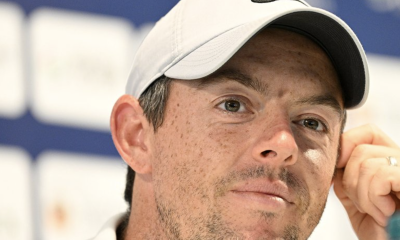
 19th Hole4 days ago
19th Hole4 days agoBrandel Chamblee says this is the primary reason why Rory McIlroy hasn’t won a major in 10 years
-

 Whats in the Bag5 days ago
Whats in the Bag5 days agoTiger Woods WITB 2024 (May)
-

 19th Hole2 weeks ago
19th Hole2 weeks agoReport: LIV star turns down PGA Championship invite due to ‘personal commitments’
-

 19th Hole3 weeks ago
19th Hole3 weeks agoGary Player claims this is what ‘completely ruined’ Tiger Woods’ career
-

 Equipment2 weeks ago
Equipment2 weeks agoDetails on Justin Thomas’ driver switch at the Wells Fargo Championship
-

 News2 days ago
News2 days agoScottie Scheffler arrested, charged, and released after traffic incident at Valhalla
-

 Whats in the Bag2 weeks ago
Whats in the Bag2 weeks agoKeegan Bradley WITB 2024 (May)
-

 Equipment3 weeks ago
Equipment3 weeks agoGolf fans left surprised by LIV’s choice of course for its 2024 individual championship event














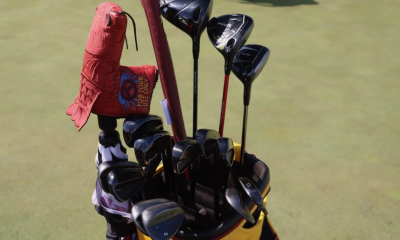

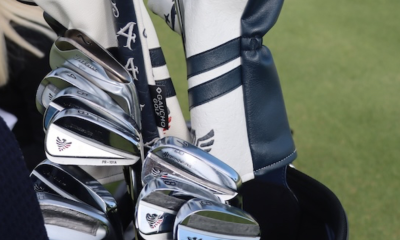

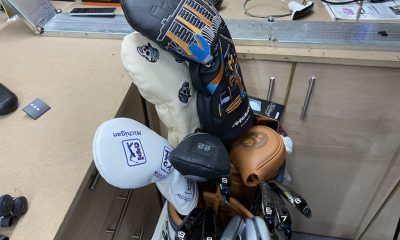

iye
Jul 18, 2018 at 10:06 pm
FBI/CIA/NSA…. planning elimination of POTUS…. believe it!
JMM
Jul 18, 2018 at 9:40 pm
Agree with Bad Putter, this sounds fantastic but the monthly subscription will box out most recreational golfers.
Bad Putter
Jul 18, 2018 at 8:08 am
Excellent interview and cool product. The fees do seem high and definitely a barrier to entry for a recreational golfer, but I hope have an instructor in my area that has one.
Neil Murphy
Jul 17, 2018 at 10:20 pm
Looks similar to the Ping putting app, for which, you had to put the iPhone in a cradle and attach it to the putter shaft. Data appears similar. I remember that the app was free and the cradle cost about $30.
James T
Jul 18, 2018 at 9:25 am
I remember that the app was free. And the duct tape was almost free, too. (Had to, there wasn’t a phone cradle to fit my phone at the time)
Ian Baker Finch
Jul 17, 2018 at 7:52 pm
Looks similar to data from a SAM device. Does it give recommendations on length/ lie angle?
robert
Jul 17, 2018 at 4:54 pm
Lol…… looks like a testacle for your petter.
James T
Jul 17, 2018 at 3:49 pm
So John used to work for Apple. All well and good. But when will this device and app be released on the more popular platform, Android?
alan
Jul 17, 2018 at 3:42 pm
Hallelujah!!! My putting woes are solved…. a Biomech Acculuck ACE putter and a sensor to tell me why I’m sooo baaaad on the greens. 😮